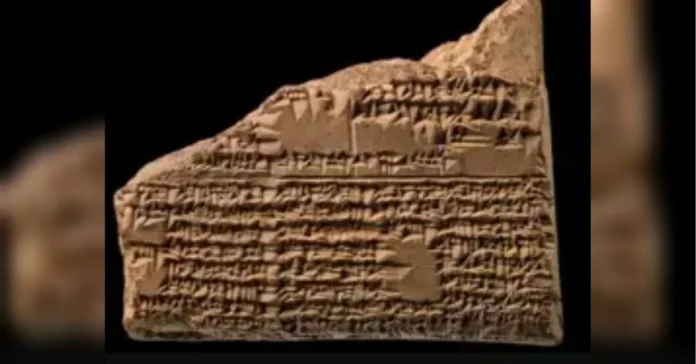The British Museum is home to a vast collection of artifacts and treasures from all corners of the world. One of the most fascinating and significant pieces in their possession is a set of ancient Babylonian tablets, dating back over 4000 years. These tablets offer a glimpse into the rich and complex culture of the ancient civilization of Mesopotamia and have been a source of fascination and research for scholars and visitors alike.
The tablets were discovered in the late 19th century during the excavation of the ancient city of Nineveh in modern-day Iraq. They were part of the library of King Ashurbanipal, who ruled the Neo-Assyrian Empire from 668 to 627 BCE. The library contained over 30,000 cuneiform tablets, making it one of the largest collections of its time. These tablets were used for recording important administrative, legal, and literary texts, making them an invaluable source of information about the society and daily life of the ancient Babylonians.
After their discovery, the tablets were acquired by the British Museum and have been an integral part of their collection ever since. The museum has taken great care in preserving and displaying these fragile artifacts, ensuring that they can be appreciated by generations to come. At present, there are over 130,000 cuneiform tablets in the museum’s possession, with the Babylonian tablets being a significant and highly prized subset of this collection.
The tablets cover a wide range of topics, and each one tells a unique story. Some of them contain epic tales and religious texts, while others provide insights into the Babylonian’s advanced knowledge in fields such as mathematics, astronomy, and medicine. One notable tablet is the Enuma Elish, also known as the Babylonian creation story. It is a fascinating account of the creation of the world and the rise of the Babylonian god Marduk. It is considered one of the oldest creation myths in existence, predating even the biblical version.
The tablets also shed light on the daily life and customs of the ancient Babylonians. Some of them contain legal codes and contracts, giving us a glimpse into their legal system and how they conducted business. Others provide information about the economy, trade, and agriculture of the time, giving us a better understanding of the society’s structure and organization.
Apart from their historical and cultural significance, the tablets are also a testament to the advanced writing system of the ancient Babylonians. Cuneiform, which means “wedge-shaped” in Latin, was one of the earliest forms of writing. It involved pressing triangular-shaped reeds into wet clay to form characters, which were then dried and hardened. It was a complex and time-consuming process, but it allowed for the recording and preservation of important information, making it a crucial aspect of ancient civilizations.
The British Museum has made these tablets accessible to a wide audience through its online database and regular exhibitions. Visitors can view the tablets up close and learn about their significance through guided tours and expert-led talks. The museum has also collaborated with scholars and experts to publish books and articles on the tablets, making them available to researchers and academics worldwide.
The tablets from ancient Babylon are not only a valuable addition to the British Museum but also to the world’s collective knowledge and understanding of human history. They provide a unique insight into one of the oldest and most influential civilizations, and their preservation and display at the British Museum have allowed people from all walks of life to appreciate and learn from them.
In conclusion, the British Museum’s collection of ancient Babylonian tablets is a treasure trove of historical, cultural, and linguistic significance. The museum’s dedication to preserving and showcasing these artifacts is commendable and has enabled people worldwide to learn about the achievements and legacy of the ancient Babylonian civilization. These tablets serve as a reminder of the enduring power of human ingenuity and the importance of preserving our collective heritage for generations to come.

